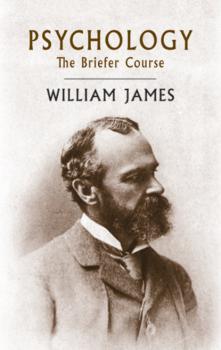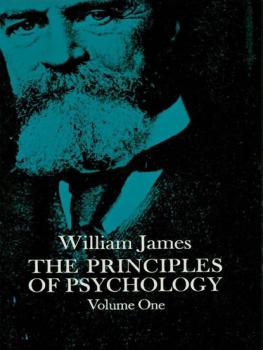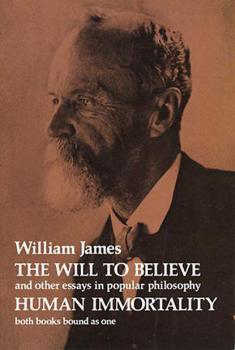ТОП просматриваемых книг сайта:















Зарубежная психология
Различные книги в жанре Зарубежная психология, доступные для чтения и скачиванияАннотация
The Nobel Prize-winning scientist offers a precise, full, and accessible exposition of his landmark work in experimental psychology. Pavlov details the technical means by which he established experiments and controls, the experiments, observations on formation of conditioned reflexes, external and internal reflex inhibitions, the function of cerebral hemispheres and cortex, and more. 18 figures.
Аннотация
According to Freud, our daily lives teem with unwitting expressions of the wishes and ideas we try to keep hidden. These suppressed notions elude our conscious control and take the form of slips of the tongue, jokes, and seemingly accidental gestures. In this classic of psychology, Freud explores the phenomenon of parapraxes: slips of the tongue commonly known as Freudian slips, acts of forgetfulness, misinterpretations, and «accidents.» These simple and apparently trivial events, he explains, can possess deeper meanings with subconscious motivations — meanings that can be revealed by analysis and can ultimately offer a clearer perception of the self.Psychopathology of Everyday Life remains one of Freud’s most widely read books, full of anecdotal accounts (many of them quite amusing) and free from jargon and technical terminology. Freud draws from his personal experience to illustrate his points, citing many incidents of his own deliberate forgetting or «inexplicable» mistakes, and his conviction that these actions cannot be called truly accidental or uncaused is the primary lesson of this book. As the title suggests, this work has helped unravel the mysteries of the ordinary events of our daily lives, offering us a deeper understanding of ourselves and our motivations.
Аннотация
Condensed and reworked from James's monumental Principles of Psychology, this classic text examines habit; stream of consciousness; self and the sense of personal identity; discrimination and association; the sense of time; memory; perception; imagination; reasoning; emotions, instincts; the will and voluntary acts; and much more. This edition omits the outdated first nine chapters.
Аннотация
This is the first inexpensive edition of the complete Long Course in Principles of Psychology, one of the great classics of modern Western literature and science and the source of the ripest thoughts of America’s most important philosopher. As such, it should not be confused with the many abridgements that omit key sections.The book presents lucid descriptions of human mental activity, with detailed considerations of the stream of thought, consciousness, time perception, memory, imagination, emotions, reason, abnormal phenomena, and similar topics. In its course it takes into account the work of Berkeley, Binet, Bradley, Darwin, Descartes, Fechner, Galton, Green, Helmholtz, Herbart, Hume, Janet, Kant, Lange, Lotze, Locke, Mill, Royce, Schopenhauer, Spinoza, Wundt, and scores of others. It examines contrasting interpretations of mental phenomena, treating introspective analysis, philosophical interpretations, and experimental research.It remains unsurpassed today as a brilliantly written survey of William James’ timeless view of psychology.
Аннотация
This volume contains the complete texts of two books by America's most important psychologist and philosopher. Easy to understand, yet brilliant and penetrating, the books were written specifically for laymen and they are still stimulating reading for readers concerned with important questions of belief in an age of science.In the essays, under the heading The Will to Believe, James discusses, first, the interrelationships of belief, will, and intellect, examining such questions as: How does man believe? How do intellectual considerations color belief? How much of a role do irrational elements play even in rigorously logical thought? Chance versus determinism, free will versus fate, pluralism versus monism are discussed in succeeding sections. James also covers psychical research, Hegelianism, and Spencer's philosophy.Human Immortality: Two Supposed Objections to the Doctrine, reprinted here from the corrected second edition, examines the questions of survival after death, and provides an unusual philosophical rebuttal to the theory that thought and personality necessarily die with the brain.
Аннотация
In this, his most famous and influential work, Carl Jung made a dramatic break from the psychoanalytic tradition established by his mentor, Sigmund Freud. Rather than focusing on psychopathology and its symptoms, the Swiss psychiatrist studied dreams, mythology, and literature to define the universal patterns of the psyche.In Psychology of the Unconscious, Jung seeks a symbolic meaning and purpose behind a given set of symptoms, placing them within the larger context of the psyche. The 1912 text examines the fantasies of a patient whose poetic and vivid mental images helped Jung redefine libido as psychic energy, arising from the unconscious and manifesting itself consciously in symbolic form. Jung's commentary on his patient's fantasies offers a complex study of symbolic psychiatry and foreshadows his development of the theory of collective unconscious and its constituents, the archetypes.The author's role in the development of analytical psychology, a therapeutic process that promotes creativity and psychological development, makes this landmark in psychoanalytic methodology required reading for students and others interested in the practice and process of psychology.
Аннотация
Australian psychology practice today is a dynamic, well respected and increasingly competitive environment. Many new psychologists graduate with an expectation of setting up their own private practice. But how is that best done? What are the traps to avoid, the questions to ask, the knowledge needed to succeed? Find out here in this book written by three highly experienced psychologists with more than 75 years of private practice experience between them as well as backgrounds in academic training, dealing with complaints about psychologists, training and supervision of psychologists, and presenting as expert witnesses. They’ve seen or experienced just about everything that can be thrown at a modern Australia psychology practice and lived to impart their advice. Written from a no-nonsense approach, with plenty of practical examples and personal reflections from each author scattered throughout, this is a manual designed for those either entering private practice or already practicing who might want to continue their professional development. Topics covered include: • setting up in private practice • Medicare audits • treatment in a private practice setting • consultation, supervision, self-care • ethical dilemmas • Feedback Informed Treatment (FIT) • record keeping, case notes, writing reports • avoiding legal pitfalls • contingency planning • closing and selling a practice
Аннотация
This short work by world-renowned psychologist Sigmund Freud marks a major turning point in the author's theoretical approach. Prior to this work Freud's examination of the forces that drive man focused primarily on the Eros of man, the life instinct innate in all humans. In «Beyond the Pleasure Principle» Freud moves beyond these creative and pleasure-seeking impulses to discuss the impact on human psychology of the Thanatos, or death instinct, which Freud describes as «an urge inherent in all organic life to restore an earlier state of things».
Аннотация
Sigmund Freud founded the psychoanalytic school of psychology and was particularly well known for his focus on the unconscious mind. Freud believed that the interpretation of dreams were sources of insight in unconscious desires and the unconscious mind. In «Dream Psychology» we have an exploration of Freud's theories on the interpretation of dreams and through the reading of the following nine chapters of this book readers will gain a better understanding of the theories that made Sigmund Freud such an important figure in the world of psychology: I. Dreams Have a Meaning, II. The Dream Mechanism, III. Why the Dream Disguises the Desires, IV. Dream Analysis, V. Sex in Dreams, VI. The Wish in Dreams, VII. The Function of the Dream, VIII. The Primary and Secondary Process—Regression, and IX. The Unconscious and Consciousness—Reality.
Аннотация
For centuries, doctors have struggled to define mental illness – how do you diagnose it, how do you treat it, how do you even know what it is? In search of an answer, in the 1970s a Stanford psychologist named David Rosenhan and seven other people – sane, normal, well-adjusted members of society – went undercover into asylums around America to test the legitimacy of psychiatry's labels. Forced to remain inside until they'd 'proven' themselves sane, all eight emerged with alarming diagnoses and even more troubling stories of their treatment. Rosenhan's watershed study broke open the field of psychiatry, closing down institutions and changing mental health diagnosis forever.
But, as Cahalan's explosive new research shows, very little in this saga is exactly as it seems. What really happened behind those closed asylum doors, and what does it mean for our understanding of mental illness today?
But, as Cahalan's explosive new research shows, very little in this saga is exactly as it seems. What really happened behind those closed asylum doors, and what does it mean for our understanding of mental illness today?










